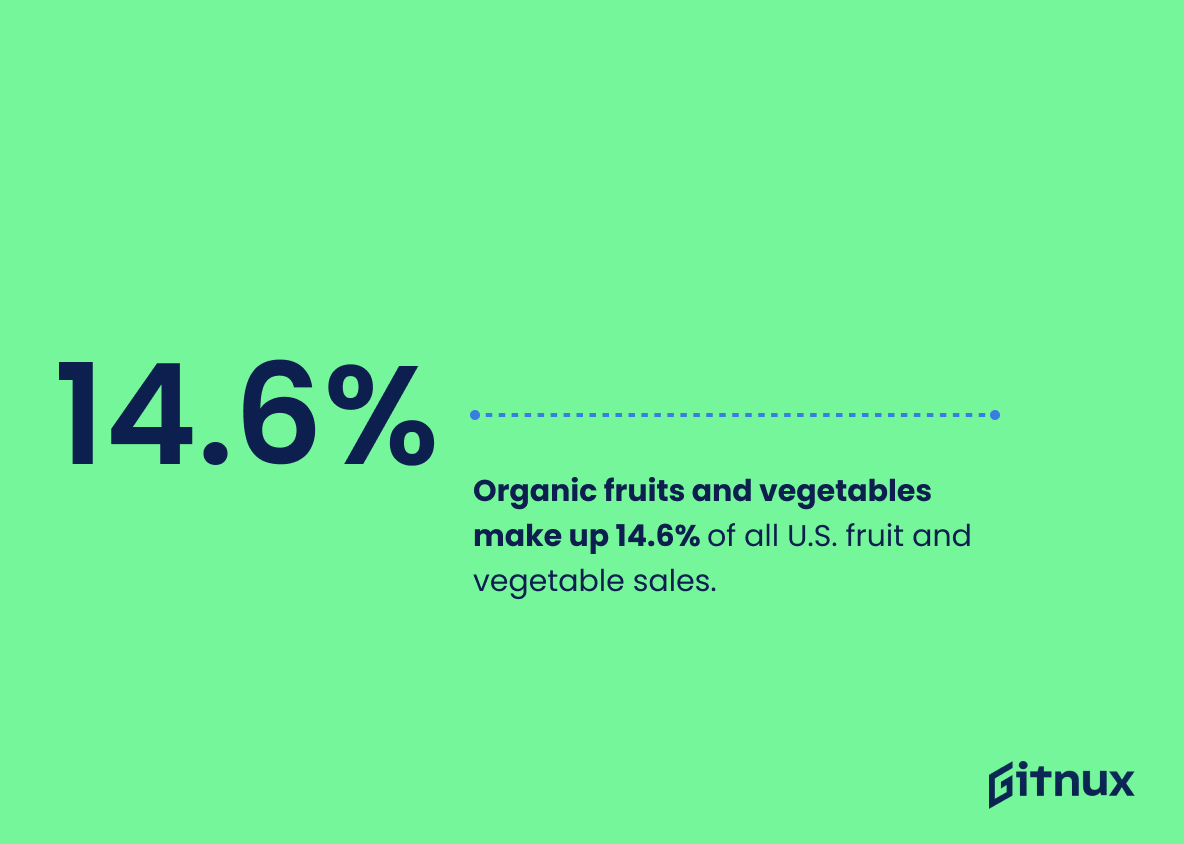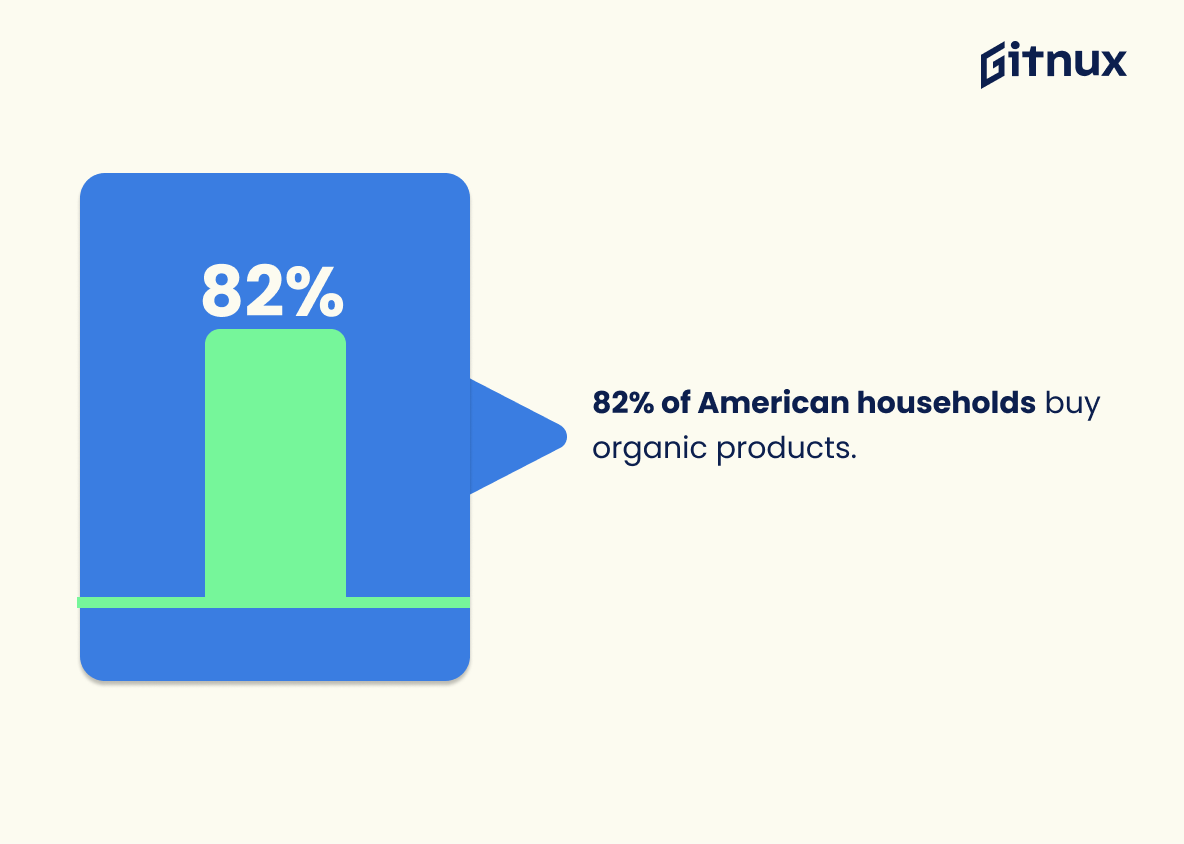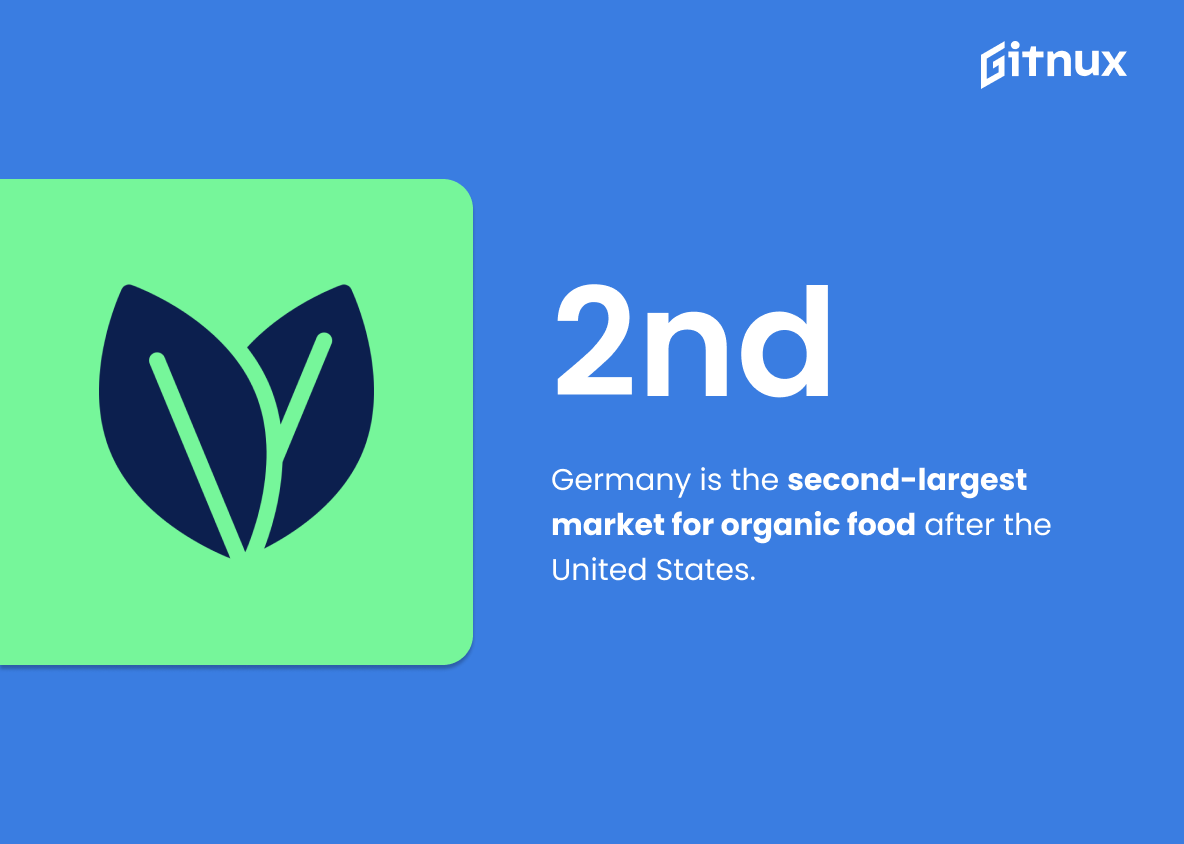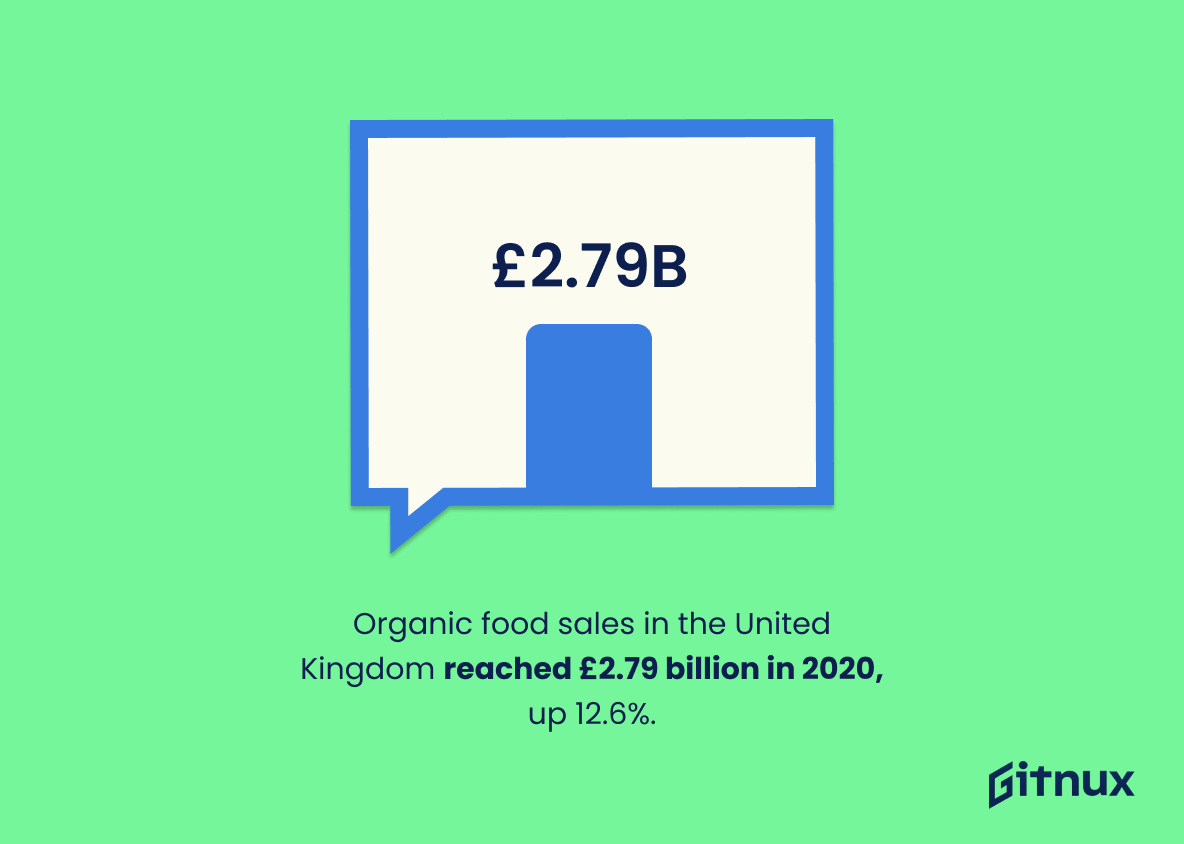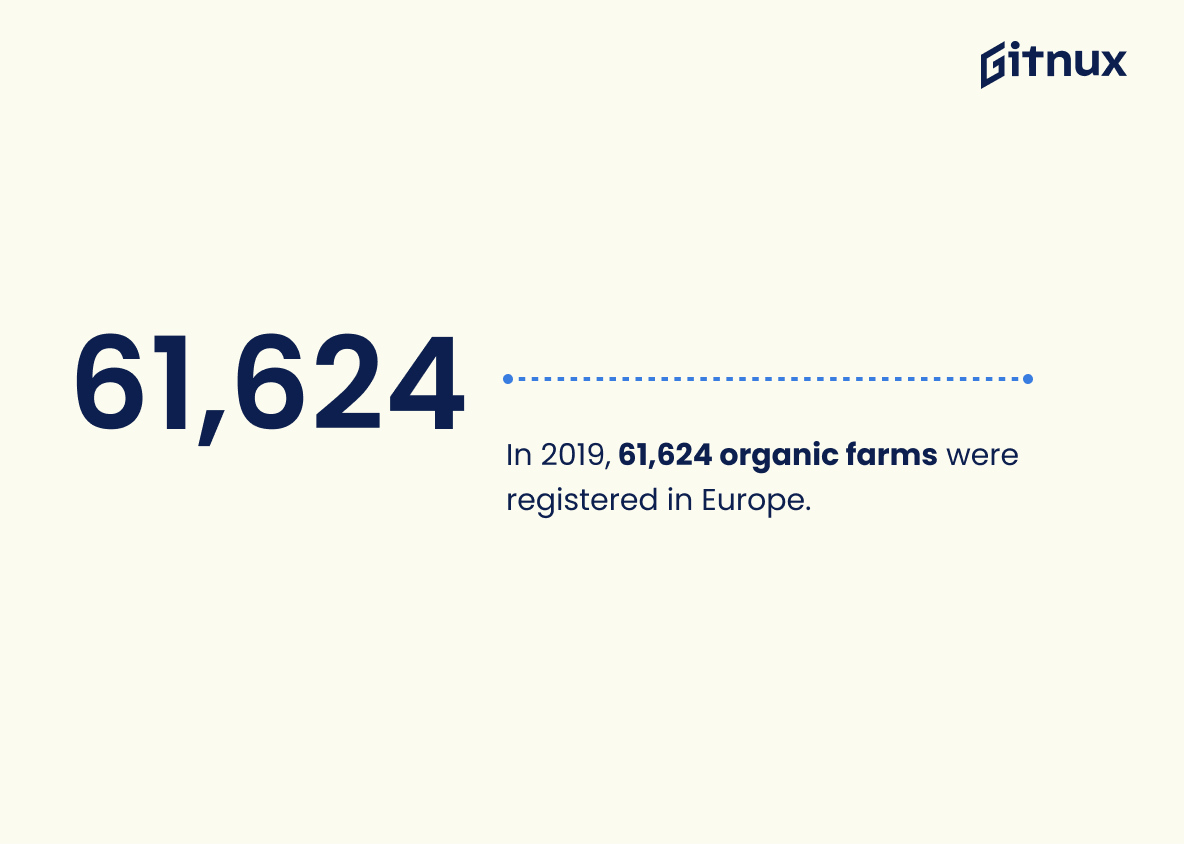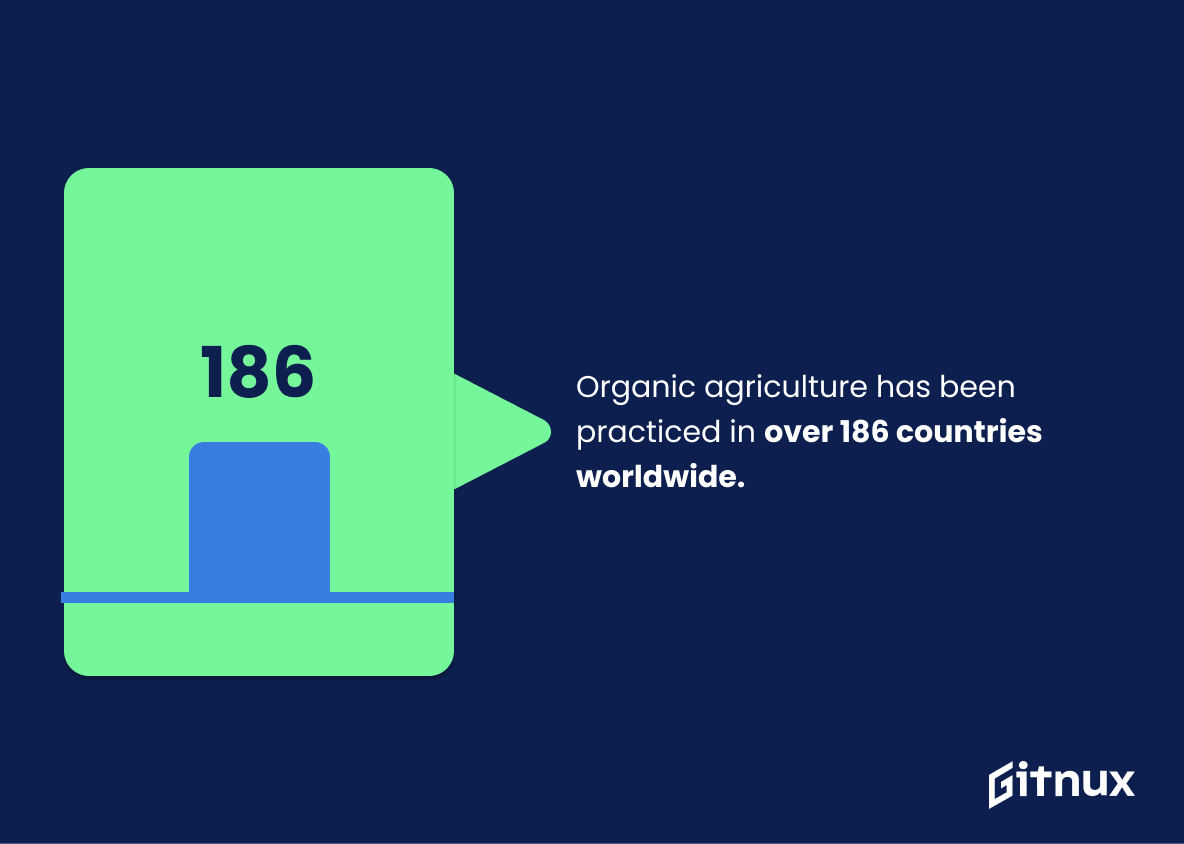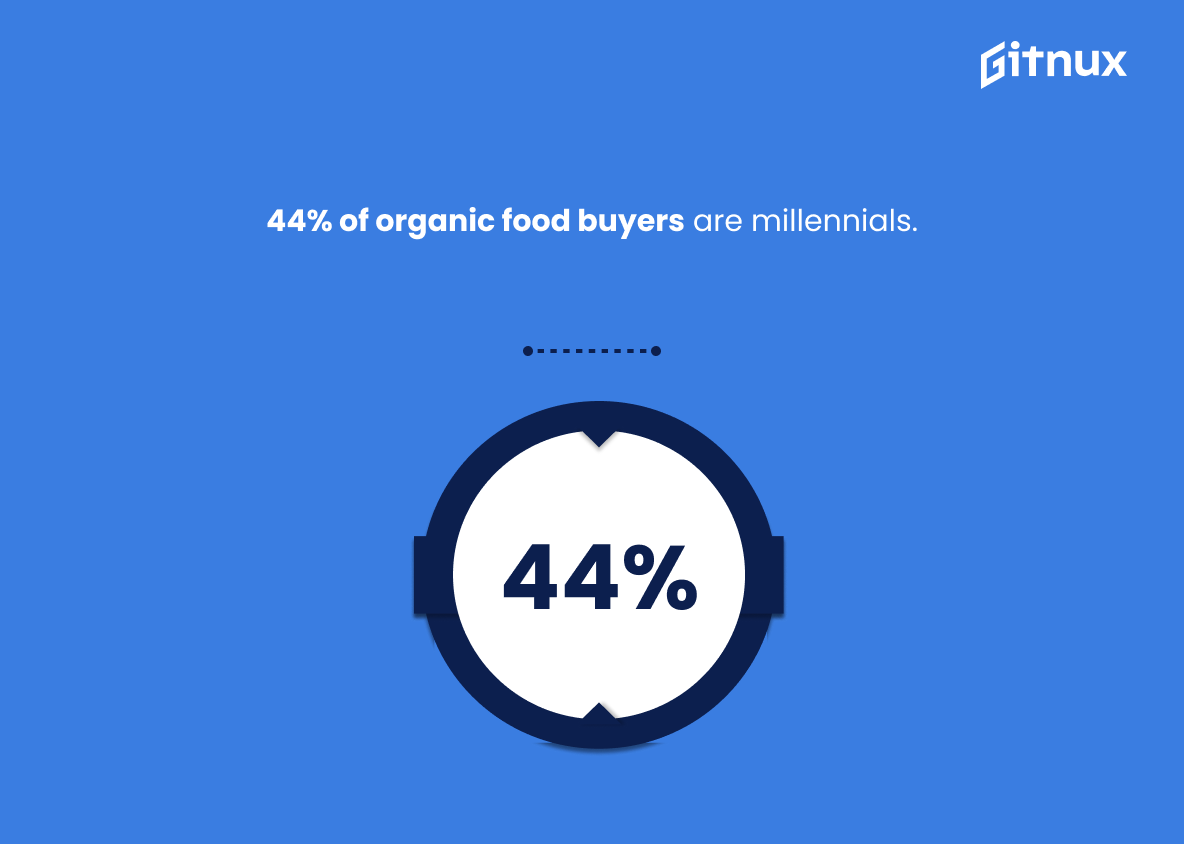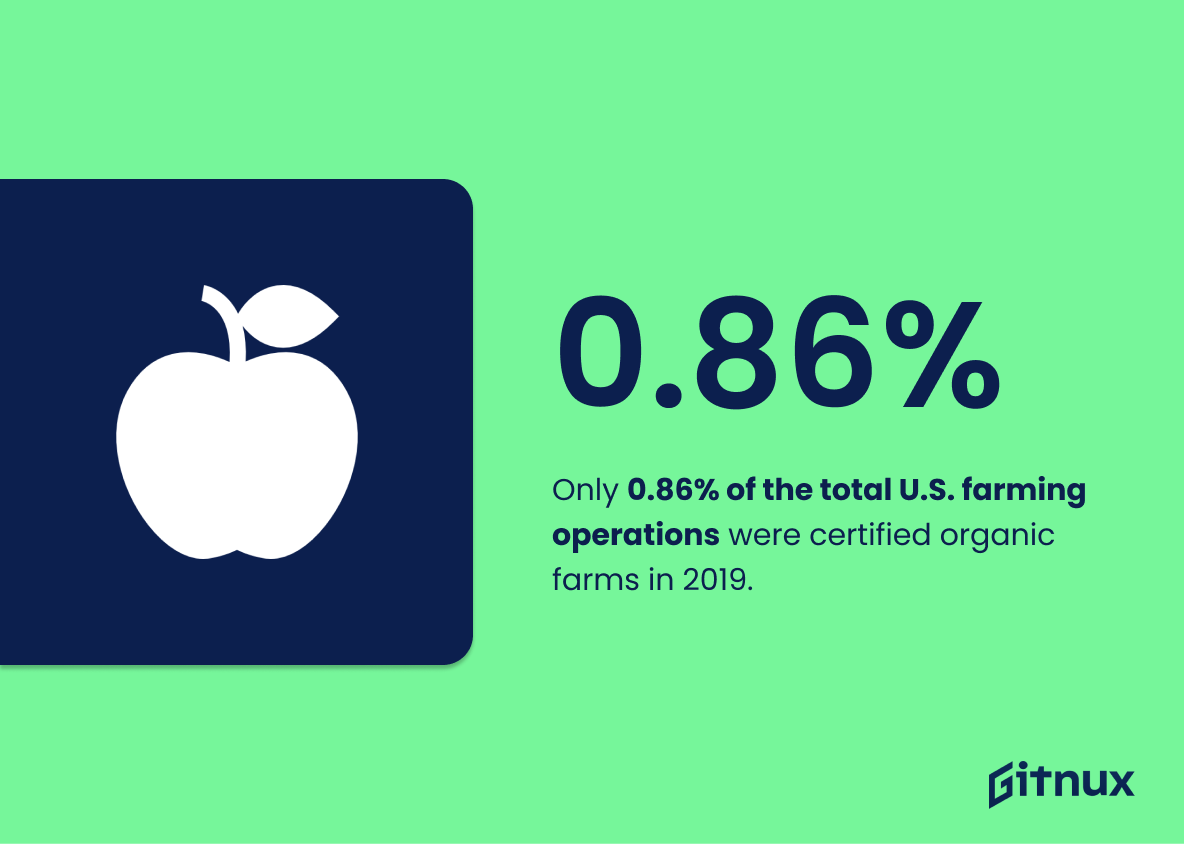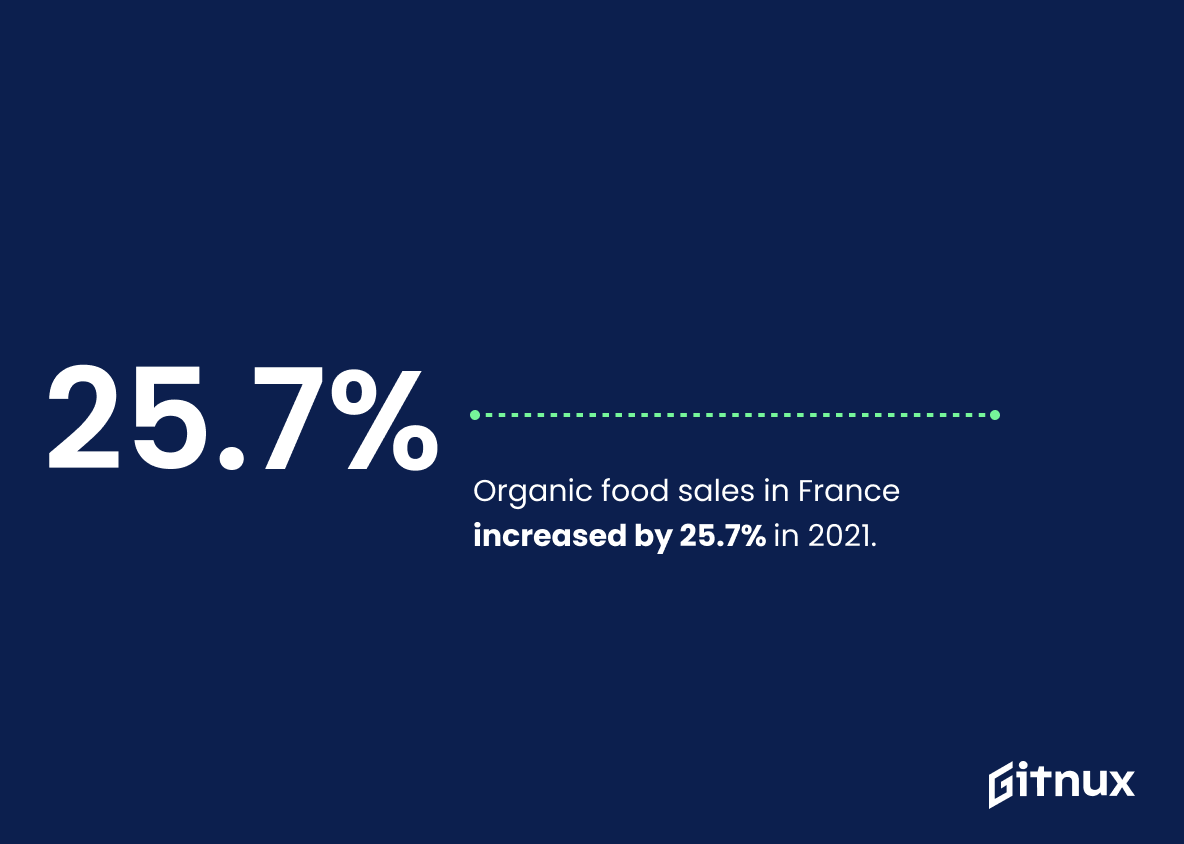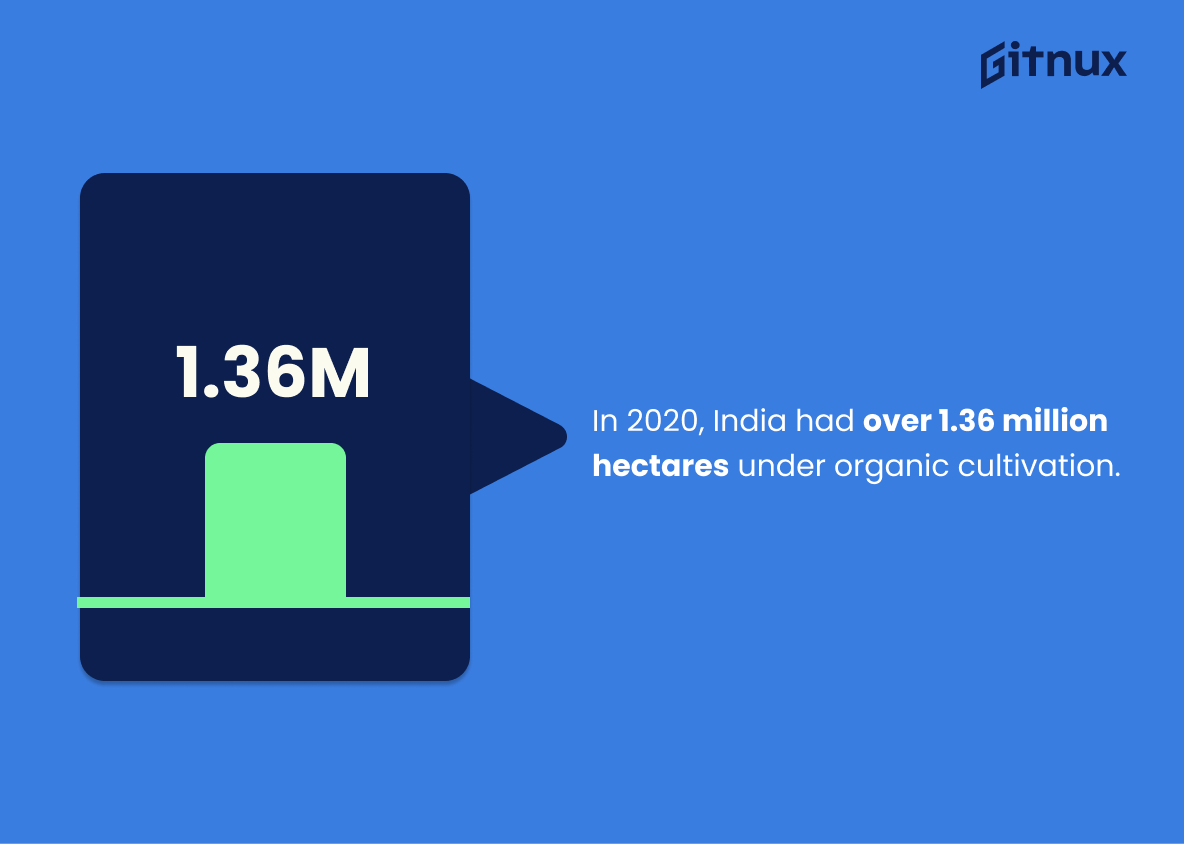Organic food is becoming increasingly popular around the world, with sales reaching record highs in 2020. In this blog post, we will explore some of the most interesting organic food statistics from across the globe. From US consumer purchasing habits to global land use for organic farming and more, these stats provide a comprehensive look at how far-reaching and influential organic agriculture has become. We’ll also take a closer look at specific countries such as Australia, Germany, France and India to see what their individual markets have been up to over recent years. So let’s dive into it.
This statistic is a testament to the growing popularity of organic food, showing that more and more people are choosing to purchase organic products. It is a clear indication that organic food is becoming increasingly sought after, and that the industry is continuing to grow. This is an important statistic to consider when discussing organic food statistics, as it provides insight into the current state of the industry.
46% of US consumers purchased organic food in 2020.
This statistic is a powerful indicator of the growing popularity of organic food among US consumers. It shows that more and more people are recognizing the benefits of organic food and are willing to invest in it. This statistic is an important piece of evidence that can be used to support the argument that organic food is becoming increasingly popular and is here to stay.
Organic Food Statistics Overview
Organic food production represents 1.5% of the world’s total agricultural land.
This statistic is a telling indication of the current state of organic food production in the world. It highlights the fact that organic food production is still a relatively small part of the global agricultural landscape, and that there is still much room for growth in this area. This is an important point to consider when discussing the potential of organic food production and its impact on the environment and human health.
The US organic food market size will grow at a CAGR of 10.2% from 2020-2025.
This statistic is a testament to the increasing popularity of organic food, as the market size is projected to grow at a compound annual growth rate of 10.2% over the next five years. This indicates that more and more people are turning to organic food as a healthier and more sustainable option, and that the organic food industry is likely to continue to expand in the coming years.
Organic fruits and vegetables make up 14.6% of all U.S. fruit and vegetable sales.
This statistic is a testament to the growing popularity of organic fruits and vegetables in the United States. It shows that more and more people are choosing to purchase organic produce, which is a positive sign for the health of our environment and our bodies. It also indicates that organic food is becoming more accessible and affordable, which is great news for those looking to make healthier choices.
82% of American households buy organic products.
This statistic is a powerful indicator of the growing popularity of organic products among American households. It shows that organic food is becoming increasingly accessible and desirable to the average consumer, and that organic food is becoming a more mainstream choice. This statistic is an important piece of evidence to include in a blog post about organic food statistics, as it demonstrates the increasing demand for organic products.
Australia has the largest area of organic agricultural land, with 35.7 million hectares.
This statistic is a testament to the fact that Australia is a leader in organic agricultural land, with an impressive 35.7 million hectares dedicated to organic farming. This is a significant amount of land that is devoted to producing organic food, which is beneficial for both the environment and consumers. It shows that Australia is committed to providing safe, healthy, and sustainable food options for its citizens.
Germany is the second-largest market for organic food after the United States.
This statistic is a testament to the growing popularity of organic food in Germany, indicating that the country is becoming increasingly aware of the benefits of organic food and is willing to invest in it. This is an important point to make in a blog post about organic food statistics, as it shows that organic food is becoming more widely accepted and embraced.
Organic food sales in the United Kingdom reached £2.79 billion in 2020, up 12.6%.
This statistic is a testament to the growing popularity of organic food in the United Kingdom. It shows that more and more people are choosing to purchase organic food, which is a positive sign for the health of the nation and the environment. This statistic is an important indicator of the success of organic food in the UK and should be celebrated.
In 2019, 61,624 organic farms were registered in Europe.
This statistic is a testament to the growing popularity of organic farming in Europe. It shows that more and more people are recognizing the benefits of organic food and are taking steps to ensure that their food is produced in a sustainable and environmentally friendly way. This is an encouraging sign for the future of organic food production and consumption in Europe.
Organic agriculture has been practiced in over 186 countries worldwide.
This statistic is a testament to the global reach of organic agriculture, demonstrating its widespread acceptance and implementation. It is a powerful reminder that organic farming is not just a trend, but a viable and sustainable option for food production that is being embraced by countries around the world.
44% of organic food buyers are millennials.
This statistic is significant in the context of a blog post about Organic Food Statistics because it reveals that millennials are a major driving force behind the organic food industry. It indicates that organic food is becoming increasingly popular among this demographic, and that businesses should consider targeting millennials when marketing organic food products.
Only 0.86% of the total U.S. farming operations were certified organic farms in 2019.
This statistic serves as a stark reminder of the limited availability of organic farming operations in the United States. It highlights the need for more organic farming operations to meet the growing demand for organic food. It also emphasizes the importance of supporting organic farmers and their efforts to provide healthier, more sustainable food options.
Denmark has the highest organic food market share with 12.1% of total food sales.
Denmark’s impressive 12.1% organic food market share is a testament to the country’s commitment to sustainable and healthy eating. This statistic serves as a shining example of how organic food can be successfully integrated into the diets of a nation, and provides a benchmark for other countries to strive towards.
Organic food sales in France increased by 25.7% in 2021.
This statistic is a testament to the growing popularity of organic food in France. It shows that more and more people are choosing to purchase organic food, which is a positive sign for the health of the environment and the health of the people. This statistic is an important indicator of the success of organic food initiatives in France and can be used to inform future decisions about organic food production and consumption.
In 2020, India had over 1.36 million hectares under organic cultivation.
This statistic is a testament to the growing popularity of organic food in India. It shows that more and more people are turning to organic food as a healthier and more sustainable option. This is an encouraging sign for the organic food industry, as it indicates that the demand for organic food is increasing. Furthermore, it highlights the potential for further growth in the organic food sector in India, which could lead to more jobs and economic opportunities.
Switzerland has the highest per capita consumption of organic food at €312 per person.
This statistic is a testament to Switzerland’s commitment to organic food consumption, highlighting the country’s dedication to sustainable and healthy eating habits. It serves as an example of how organic food can be incorporated into everyday life, and how it can be done in a way that is both affordable and accessible. This statistic is a powerful reminder of the importance of organic food and its potential to improve the health and wellbeing of individuals and communities.
Approximately 41% of Italian organic food sales happen in supermarkets.
This statistic is significant in the context of organic food statistics because it reveals the extent to which Italian consumers are embracing organic food. It shows that supermarkets are a major source of organic food for Italian consumers, indicating that organic food is becoming increasingly accessible and popular.
Conclusion
Organic food is becoming increasingly popular around the world, with sales reaching $47.86 billion in 2020 and expected to reach $620.25 billion by 2026. In the United States, 46% of consumers purchased organic food in 2020 and 82% of households buy organic products regularly. Organic fruits and vegetables make up 14.6% of all U.S fruit and vegetable sales while only 0.86% of total farming operations are certified as organic farms in 2019 . Australia has the largest area for agricultural land at 35 million hectares followed by Germany which is second-largest market for organic foods after US . The UK had £2 79 billion worth of sales from organics last year , a 12 6 % increase on previous years figures Meanwhile France saw an impressive 25 7 % growth rate during 2021 due to Covid 19 restrictions India also reported 1 36 million hectares under cultivation this year Switzerland has highest per capita consumption at €312 per person Italy’s supermarkets account for 41 percent share when it comes to their country’s overall sale figures Overall these statistics demonstrate that there is growing demand worldwide for more sustainable production methods such as those used within the field of organics
References
0. – https://www.mordorintelligence.com
1. – https://www.ota.com
2. – https://www.foodnavigator-usa.com
3. – https://www.ers.usda.gov
4. – https://www.fibl.org
5. – https://www.statista.com
6. – https://www.soilassociation.org
7. – https://www.ec.europa.eu
8. – https://www.store.mintel.com
9. – https://www.organic-world.net
10. – https://www.specialtyfood.com
11. – https://www.italianfood.net
12. – https://www.foodnavigator.com
13. – https://www.nass.usda.gov
14. – https://www.bioagricert.org


